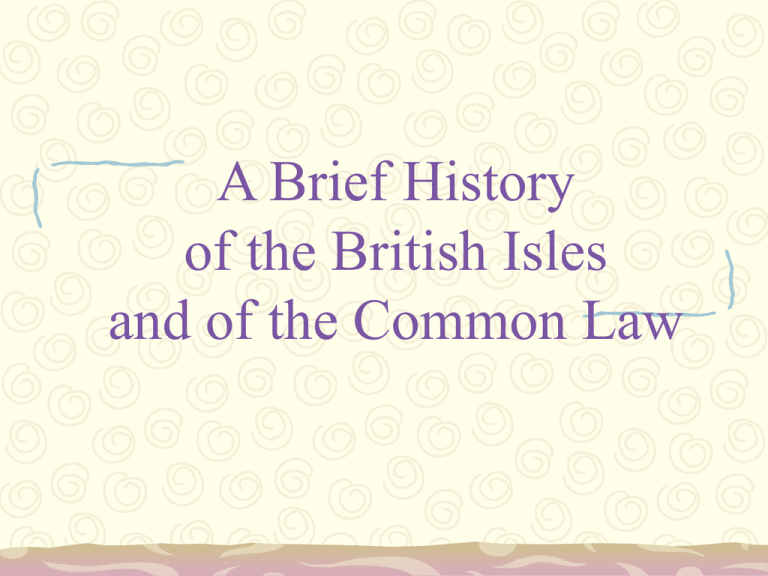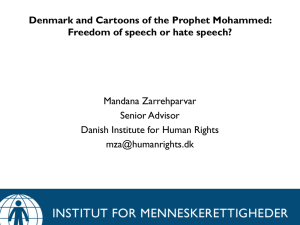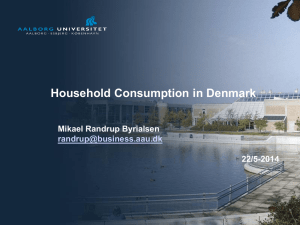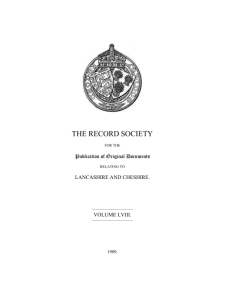A Brief History of the British Isles
advertisement

A Brief History of the British Isles and of the Common Law 10,000 – 2,000 B.C. Iron Age (around 750 BC – 43 AD) -isolation from the Continent (end of the Ice Age) - Celtic culture - first mention of the name Britannia Consequences: - end of a series of (im)migrations - domestication of animals - development of agriculture Neolithic Revolution: - first permanent settlements - social stratification (farmers - craftsmen - leaders) - religious cults, burial of the dead Bronze Age (2,200 - 750 B.C.) - Iberian immigrants bring the skill of working metal (tools, weapons, jewelry...) - renewed contacts with the Continent (trade) (Greek Pytheas around 325 B.C.) - Roman invasion and occupation → Britain becomes a Roman province 5th – 6th century • invasion of England by Germanic tribes (Angles, Saxons, Jutes) • Formation of a number of kingdoms • Heptarchy (Northumbria, Mercia, East Anglia, Essex, Kent, Sussex and Wessex) Jute war helmet Arthur Pendragon “King” of the Britons - Cornwall •Christianization (St. Augustine became the first Archbishop of Canterbury in 597. In 601, he baptised the first Christian AngloSaxon king, Aethelbert of Kent.) •Constant “state of war” between various kingdoms (allegiances form, break, change) •Early Danish and Viking raids (NE) Around 800 • the Danes begin to settle in Britain Danelaw – the Danish kingdom in Saxon England - early 9th century • Throughout the 9th century the Danes continue their expansion to the Southwest • Rise of the Kingdom of Wessex • Alfred the Great stops Danish expansion and begins with the unification of England in 890’s - the Chichester Peace Treaty • early English law • Renewed Danish invasion resulting in the Danish rule over England (late 10th century) • Introduction of Danish laws (Canute Law) England as a part of Canute’s/Cnut’s realm • Between 978 and 1066 the rulers of England change between the successors of Alfred the Great and Cnut and his descendants • In 1066 the emptied throne of England was claimed by several people - it fell to Harald Godwinson whose right was disputed → Norman invasion in October 1066 Richard I the Lionheart (Richard Cœur de Lion) 1189–1199 (Duke of Normandy, Duke of Aquitaine, Duke of Gascony, Lord of Ireland, Lord of Cyprus, Count of Anjou, Count of Nantes and Overlord of Brittany) - Lead Christian armies to Jerusalem in the Third Crusade - Regained for the Christians the access to Jerusalem - agreed upon a three-year period of peace with Saladin - had to leave the campain to defend his throne in England against his brother John and Philip II of France John Lackland / Softsword 1199–1216 - Tried to take his brother’s throne - Offered money to keep Richard imprisoned - succeeded Richard after his death - was forced to sign the Magna Carta thus allowing the Barrons to dispose over the land Eward I – Longshanks 1272–1307 -wages wars gainst Wales 1282 – 1283 adding it to English crown lands -invades Scotland and crushes the Scottish rebellion -regains control over land -supports the development of borroughs and towns -organizes taxation -summons the Model Parliament (1295) - foundation of the English Parliament with two houses Robert I of Scotland 1306 – 1329 - Secures Scottish independence from England after the battle at Bannockburn (1314) - England relieved from a constant threat from the north • The need for land forces the English king and nobles to war against France (1337) • They claim their right to land in France (Normandy) • Initial series of successes of the English army (thanks primarily to Welsh archers) • The war is dragged into eternity (The 100 Years War), both sides suffer heavy losses, • Stricken by diseases, hunger and lack of almost everything the English lose their possessions in France and move back to England (1453) -White Rose of York -The Yorkists, lead by Richard Duke of York, started the conflict with the battle at St Albans. -Victorious, they gained advantage and influence against their opponents. -The Red Rose of Lancaster -The Lancastrians, lead by King Henry VI, endure a series of losses -At the very beginning of the conflict the Lancastrians lost a number of prominent leaders -Tudor Rose -Benefited from the constantly changing war luck in the civil war -With most of the important supporters of both sides in conflict dead, the Tudors assume power with Henry Tudor defeating King Richard III and founding the Tudor dinasty as Henry VII. Aftermath: - final end of the Plantagenet dinasty - onset of Renaissance in England - introduction of a strong, centralized, and well administzered monarchy Henry VIII (1509 – 1547) - political actions to keep the peace (marriage with his brother Arthur’s widow Catherine of Aragon → daughter Mary – later Queen Mary I) - five other marriages to secure a male heir to the throne - defies Pope Clement VII and the King of Spain by divorcing Catherine - declared by the Parliament Head of the Church of England (1534) - politically unites Wales with England through Laws in Wales Acts 1535–1542 (based i.a. on his descent from the Welsh Tewdr dinasty) - the Tudor Renaissance Edward VI (King 1547-53) Lady Jane Grey (October 12 1537 – July 6 1553) 10 – 19 July 1553 -succeeds his father aged 10 -Represented by Regents: - Lord Sommerset (1547–49) -Lord Northumberland (1549-53) -depicted in The Prince and the Pauper “Queen for 9 Days” Mary I of England – “Bloody Mary” (1553 – 1558) • restored Catholicism • executed more than 300 opponents who refused to convert • imprisoned Jane Grey who was eventually executed •married her second cousin, Prince Philip of Spain → revolt of the people → rebellion led by Thomas Wyatt in favor of Elizabeth •imprisoned Elizabeth, tried to prove her responsible for the Wyatt rebellion but failed, sent Elizabeth to the Tower of London •Lost last English possessions in France (Port de Calais) Elizabeth I – “Virgin Queen” (1559 – 1603) •through Act of Uniformity and Act of Supremacy (1559) became the Supreme Governor of the Church of England • restores protestantism, deprives opponents of positions and property • Pope Pius V excommunicates her from Catholic Church in 1570 • several plots against her – all prevented • refuses to marry in spite of the recommendations of her Privy Council and the Parliament • 1587 - execution of Mary Stuart → outrage of Catholic Europe • 1588 war with Spain, attempted Spanish invasion fails → England gains power → beginning of England’s ascent to world power no. 1 • 1603 Elizabeth dies without having named a successor










